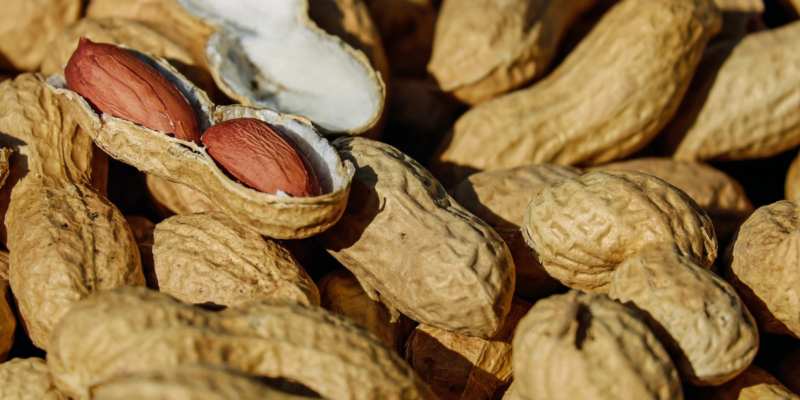Do you love whole roasted peanuts but wonder if the shells can be thrown into your compost system at home?
It’s great news that peanut shells can be added to your compost pile or bin, but you must prepare them first.
This short guide will teach you everything about composting shells of peanuts. It includes pros and cons, as well as how to do it.
Composting peanut shells can be a tricky process. Read on to find out how to do it right!
Can peanut shells be composted?
You can compost peanut shells. You can compost the shells or hulls that surround the peanut.
Compost pile microorganisms rely on nitrogen-rich green components and carbon ingredients to produce energy and process the materials continuously.
Some people are concerned that a fungus called Southern Blight which is found in peanut shells, could overwhelm a compost heap and make it unsafe for garden plants.
This problem is only an issue for those who use peanut shells to mulch and whose peanuts are from a small garden or home that does not treat its crops with fungicides.
As the temperature rises, any fungus that may be on the shells in the compost pile will die.
Southern Blight can also be avoided by buying whole-shelled peanuts in grocery stores. They are produced to eliminate the fungus, so it is unlikely that they will affect your compost.
The pros and cons of composting peanut shells.
We’ll look at the pros and cons of composting peanuts shells so that you can decide whether they’re worth including in your compost.
Pros:
- Peanut shells contain valuable carbon to offset green ingredients.
- Shells are high in potassium, nitrogen, and phosphorus.
- The shells are lightweight and bulky, which helps to aerate the compost.
- The environment benefits from recycling shells.
- Dry shells are a great way to fix overly wet compost.
Cons:
- For best results, prepare before adding to the compost.
- Southern Blight can pose a threat to cold composting systems.
- Shells may harbor or attract nematodes that can survive the composting and harm garden plants.
Composting peanut shells reduces the amount of kitchen waste that goes to landfills.
Shells add nutrients to the compost, allowing your plants to grow larger and stronger.
How long does it take for peanut shells to decompose?
The decomposition of peanut shells depends on the size and conditions of the hull.
When left outside, a shell will decompose in eight to twenty-four months. The hulls decompose faster in areas that receive more rain and slower in dry regions.
It can take up to 10 months for whole peanut shells to be unrecognizable in a hot compost pile.
It can take between nine and 18 months for the whole peanut shells to be completely broken down if you are using a cold composting method.
The processing time can be reduced by two to six months if you break or crush your peanut shells prior to adding them to your composting system.
The microbes can digest the shell fragments more easily when you add them to your compost.
How to compost peanut shells.
Follow these simple steps to process peanut shells as quickly as possible in compost:
Step 1. Inspect Peanut Shells For Disease.
Spread your peanut shells out on a tray, and inspect them quickly for spots that are dark, white, or strange.
If you find any shells discolored or soft, throw them in your regular garbage. They may be infected with a disease that could affect your compost.
You will rarely find a problem with your peanut shells. And very few of the ones you buy from a store or restaurant will have any spots, as producers remove them before packaging.
Step 2. Crush Or Chop The Peanut Shells.
Composting peanut shells is best done by breaking them into smaller pieces.
The shells can be crushed by using a kitchen mallet or rolling pin. You can use a food processor to chop them into smaller batches or step on them.
If you consume peanuts frequently, it is beneficial to make your peanut hulls smaller. This will speed up the decomposition process.
Step 3. Soak The Peanut Shells.
After crushing all the peanut shells, you will want to soak them in water for between 12 and 16 hours.
You may want to extend the soak time if the peanuts are salted.
The shells are beneficial in two different ways. First, remove excess salt to prevent it from interfering with the beneficial microbes in the compost.
To remove as much salt from the shells as possible, change the water at least every four hours.
Second, soaking peanut shells adds moisture. The peanut hulls are able to absorb a large amount of liquid.
Even a few cups of peanut shells added to a “normal” compost mix can change the moisture balance, heat levels, and microbe activity.
Step 4. Add The Peanut Shells To The Composter.
You can now add the peanut shells to the compost after soaking.
Mix the peanut shells in the same proportion as other carbon-rich ingredients, such as dry leaves or straw, to ensure that the compost does not get too wet.
This blend of hulls, carbon materials, and other elements can be added to your kitchen bin or compost tumbler. To balance the bin, add one part composting ingredients like fruit or vegetable scraps to every two to three portions of shells/carbon materials.
Can peanut shells be added to a vermicomposting unit?
If you follow the above steps, peanut shells will be a favorite of worms. They’ll devour the fibrous, moist hull, leaving behind worm casts.
Step 5. Tend To The Compost Pile.
Composting regularly helps to maintain the right oxygen, heat, and moisture levels, which allows microorganisms and the compost to flourish and decompose the material.
Turn the compost at least four to seven times a week to maintain a high level of activity. This will allow you to recycle the peanut shells, along with other ingredients, into a soil amendment.
Check your composter at least once a week to make sure the contents don’t get soggy. If you add more carbon-rich materials and mix the contents, wet compost will smell and spoil the entire batch.
Continue to work your compost until you get a dark brown mix that looks like loose dirt with no visible traces of peanut shells. It’s now ready to use.
In summary.
Composting allows you to recycle household items such as peanut shells and not send them to landfills.
This guide will help you compost peanut shells quickly and easily.













Comments